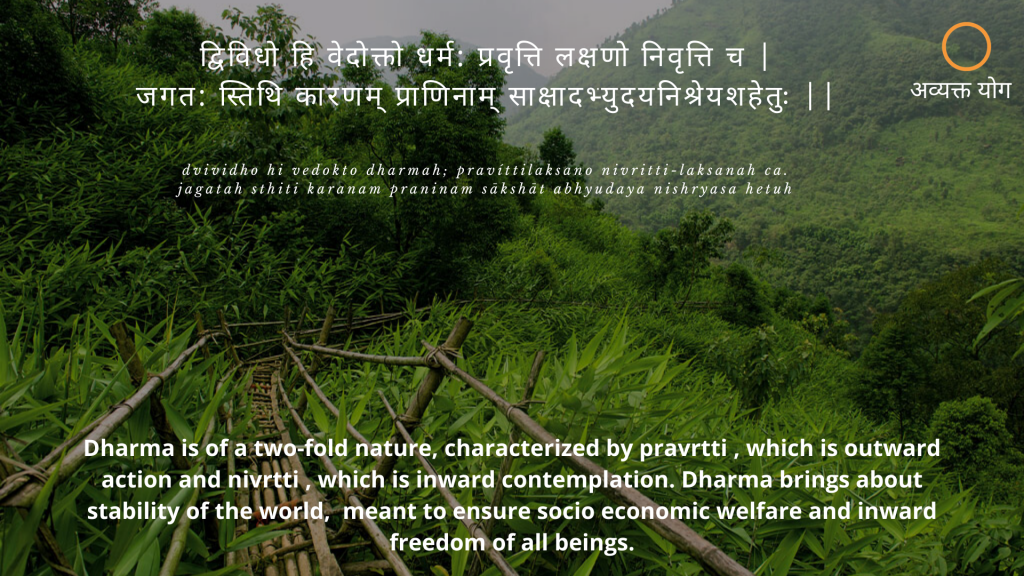A casual discussion on mediation today, got me thinking about how people view the act of meditation.
The person in question had seen a few videos on You Tube, and had come to the conclusion that meditation is all about closing your eyes and ‘not-thinking’.
Of course, she didn’t claim that she understood it fully, but the fact is that a lot of people wonder about it.
The west has sold meditation in a very superficial manner. Sit in this way, close your eyes and witness. And maybe an ‘Om’ or a ‘Shanti’ thrown in for good measure.
What they don’t know is that meditation is a continual process. Once you start on the path of meditation, you have to make many changes in your life – the food you eat, the actions you perform, the thoughts that you indulge in – all have to be aligned with the meditative practice.
It isn’t going to work if you eat junk food all day, speak filth and then in the evening, sit on a yoga mat and close your eyes.
You may calm down yes, but it surely isn’t meditation.
The disassociation of both yog and meditation from the acts of daily life is not ideal. Yog is a powerful way of living, not an hour in a studio. As I say…
The yoga studio teaches you for one hour. My yog, is for the other twenty-three.
The same goes for meditation. It is a continuation of the way you act, think and feel. Actually, the way you act, think and feel, carries on into the way you meditate.
Like every philosophy in the east, this thought too is circular. One leads to the other, and vice-versa.
So stay away from the fast-food type yoga and meditation junk. 10 minutes of closing your eyes may calm you down, but when you continue the rest of your life in the same manner, you reset to zero every single day.
And, much like climbing a stair on a tall staircase and then coming back down a notch every day, you aren’t ever going to reach the top.
Reposting below, a related thought on action and mediation. Have a read!
द्विविधो हि वेदोक्तो धर्म: प्रवृत्ति लक्षणो निवृत्ति च |
द्विविधो हि वेदोक्तो धर्म: प्रवृत्ति लक्षणो निवृत्ति च |
जगत: स्तिथि कारणम् प्राणिनाम् साक्षादभ्युदयनिश्रेयशहेतुः ||
dvividho hi vedokto dharmah; pravíttilaksano nivritti-laksanah ca|
jagatah sthiti karanam praninam sākshāt abhyudaya nishryasa hetuh||
Gita Bhaśya – by Ādi Śankara
The dharma (धर्म) taught in Vedas is of a two-fold nature, characterized by pravrtti (प्रवृत्ति), which is outward action and nivrtti (निवृत्ति), which is inward contemplation. Dharma (धर्म) brings about stability of the world, meant to ensure the abhyudaya (अभ्युदय), or socio economic welfare and nihsreyasa (नि:श्रेयस), inward freedom of all beings.

When contemplating the spiritual path, a natural doubt arises. Does one have to renounce everything, and live the life of a sage, or is there a way to be spiritual, yet a part of normal society?
As always, the Vedanta has an answer. Ādi Śankara, in his commentary on the Bhagavad Gīta, has clarified that we have two paths in life, one is pravrtti, or worldly interaction, and the other is nivrtti, or inner contemplation. Pravrtti comes to us naturally – from the time we are born, till the time we die, we are naturally inclined towards action.
A child crawls, then turns, walks, runs, pushes and pulls, without any need for formal training, doesn’t it?
Nivrtti, on the other hand, requires training. Self-contemplation though meditation is a basic method by which you can look inwards, and understand your true nature – what you think, what you feel, how your mind reacts to situations…
Pravrtti is important to organise a society – it wouldn’t be a great place to live if everyone was only engaged in inner contemplation, without any outward interaction. It is also required for the continuity of life – but in the right manner. Not on the path that we find ourselves on currently – with unhappiness, greed and over-emphasis on personal gratification rather than think of the society and the planet as a whole.
The emphasis here is on right action – on Karma Yoga.
Right action by every member of society brings about happiness, prosperity and contentment. Understanding what is good for us AND for the society makes us more mindful of others. Throwing garbage out on the street may be good for the cleanliness of your house, but surely not good for a clean neighbourhood. Similarly, doing business with an aim to profit at the cost of the well-being of your employees is not pravrtti.
The fact is that pravrtti and nivrtti are interconnected. A calmer inner self, a more meditative and contemplative person, is more inclined to engage in karma yoga for the good of the society, isn’t it?
Pravritti leads to a content society, and nivritti leads to nihsreyasa, or the inner freedom that is a consequence of the quest for oneself. It is the right answer to WHO AM I, and WHAT AM I HERE FOR?
Nivrtti is required to stabilize and purify our thinking. It brings in the moral dimension and we ask questions to ourselves before any action – Why should we do this? What will be it’s implications on us, and everyone else?
My feathered friends are all about pravritti – chirping away and bringing a sense of nivritti to all those of us who encounter them:)
